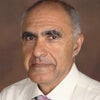Summary: The seeds of revolution are sprouting in Afghanistan, but President Ashraf Ghani can escape the Sword of Damocles by changing his trajectory and giving the provinces more freedom to self-govern.
A former university professor named Ashraf Ghani wrote a book in 2009 entitled Fixing Failed States, and now than he is President of Afghanistan, Ghani must be wondering if his book needs a complete rewrite - as he finds himself presiding over a state teetering on the brink of collapse.
Ghani and co-author Clare Lockhart subtitled their book A Framework for Rebuilding a Fractured World, which seems something of an embarrassment now as we see, after a year-and-half under Ghani's reign, Afghanistan itself remains fractured.
And the prospects for 2016 appear grim. In January, the Special Inspector General for Afghanistan Reconstruction published a quarterly report to the U.S. Congress that cites the "fragile and worsening" condition of the economy and security climate in this war-torn country.
Brinton Crane, in his influential book The Anatomy of Revolution, identified telltale signs that occurred before key revolutions throughout history - and which were mirrored in Afghanistan during the 1970s, leading up to the assassination of Sardar Mohammad Daud Khan in a bloody coup d'état.
Today, Afghanistan simmers with events that could signal yet another revolution. The political environment is volatile.
The Taliban has taken advantage of that disarray by carrying out a series of deadly attacks, inhibiting freedom of movement. Major roads in the south are impassable, and the country as a whole appears on the verge of breakdown. It led First Vice President Abdul Rashid Dostum to don his military uniform, as once he did when fighting alongside Russians in the war against the Mujahedeen.
On Feb. 15, former Jihadi commander Abdul Rasou Sayyaf demanded that the Afghan Unity Government allow Mujahedeen fighters to battle against Taliban forces.
"If people are not allowed to mobilize against the enemy to defend the country," Sayyaf said, "then the people will be compelled to take action and defend their soil. This will undoubtedly lead to disorder."
Afghans are fleeing by the thousands in search of a better life elsewhere. As part of this chain of critical events, some political activists are calling for the removal of Ghani from his presidency through a Loya Jirga - a meeting of tribal leaders and influential individuals. Among them, former Afghan president Sibghatullah Mojaddedi has criticized Ghani as a novice who suffers from a lack of government experience.
But if the elected Afghan president is removed, it may be tantamount to handing the government over to the Taliban.
There's no doubt that some of Ghani's calamities are self-inflicted, which hurt his image at home and abroad, both as a leader and as the worlds' second-most influential thinker (as he was ranked in a worldwide poll by Prospect Magazine in 2013). Much of the damage has been caused by his micro-managing of state affairs, his softness on the Taliban, and his failure to carry out campaign promises.
Ghani's style of governance forebodes social upheaval. Despite the unity government forged by the mediation of U.S. Secretary of State John Kerry, various ethnic rivals continue to jockey for power and muck up the already slow-moving engine of government. It took Ghani seven months to form a cabinet. The positions of Secretary of Defense and many other governor and minister posts have yet to be filled by Chief Executive Officer Abdullah Abdullah, who presides over an ongoing, contentious and painstaking process.
However, many circumstances are beyond President Ghani's reach. The country suffers from a chronic socio-economical sclerosis.
Aside from being land-locked, Afghanistan lacks natural resources and is losing its educated, skilled populace in a brain drain. During almost four decades of war, the country has seen its educated elite flee abroad, while its private and public institutions fall apart.
As a result, Afghanistan is unable to generate enough revenue to pay public servants, provide basic services for citizens or enforce the law.
Today, the insurgency may not be as much a problem as a weakened government that is unable to spread its wings beyond the city of Kabul. Couple that with a disturbing culture of dependency and a lack of personal responsibility among the citizens, and you have percolating disaster.
Alas, many who call for the removal of President Ghani are those who served in previous, ineffective regimes. Their credentials aren't impressive.
However, Ghani cannot ignore the warning signs. He still has a chance; Afghans have no viable alternative at this point. They are war-weary and not inclined to take to the streets in revolution. They know that if the government fails, the Taliban wins.
Ghani the author clearly underestimated the challenge of fixing failed states. Ghani the President can avoid the Sword of Damocles that fell on Sardar Daud's neck by acknowledging the creeping danger and engaging his opposition.
One giant step in the right direction would be to give the provinces more freedom to self-govern. That would remove a huge burden from his governance and perhaps change his trajectory.
And - maybe someday - he might actually be remembered as an influential thinker who helped fix a failing state.
